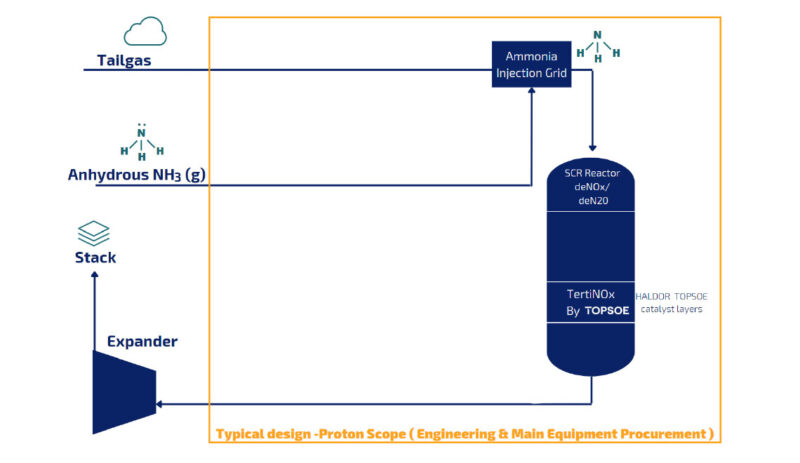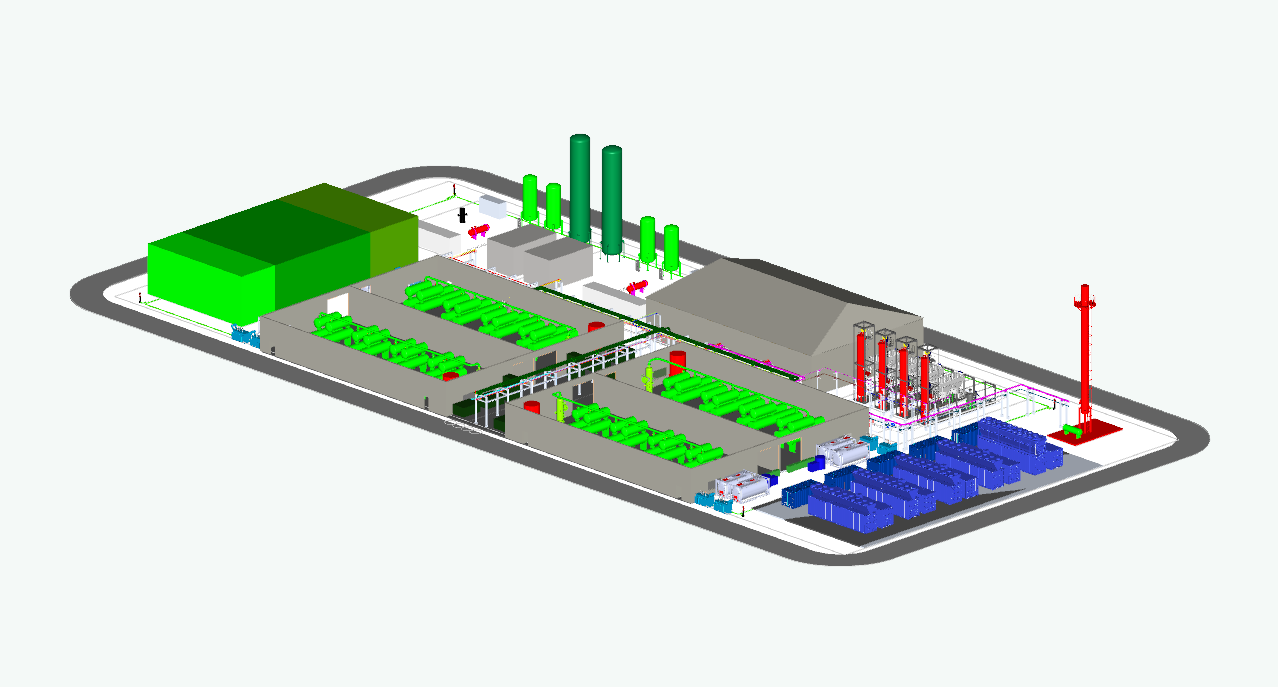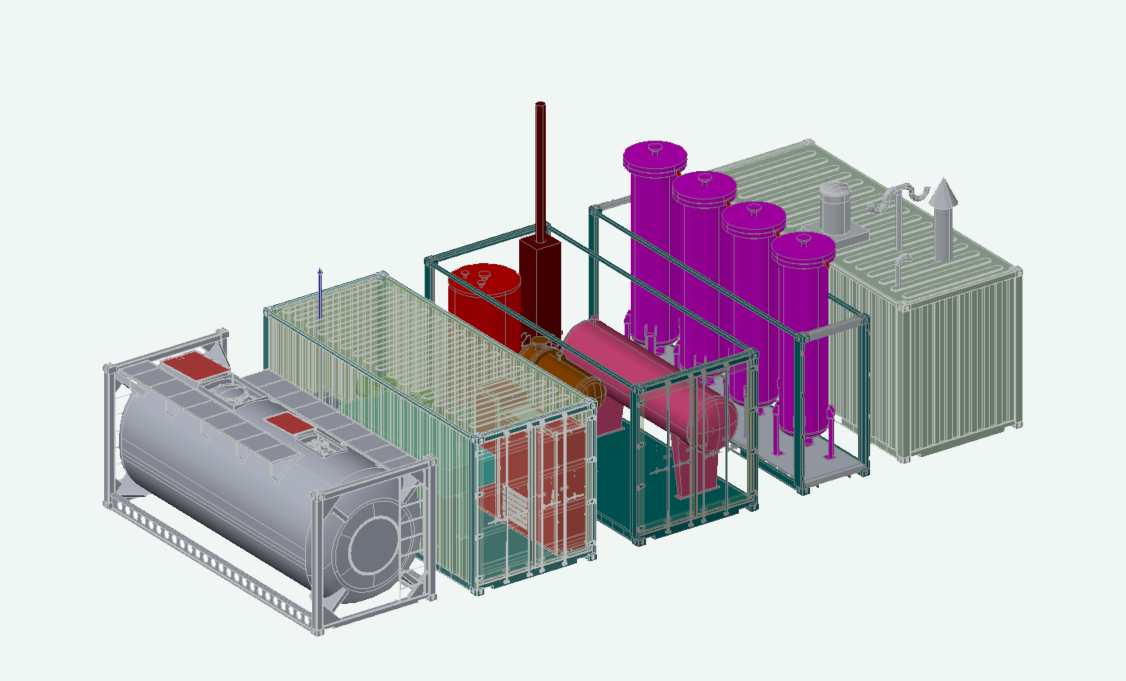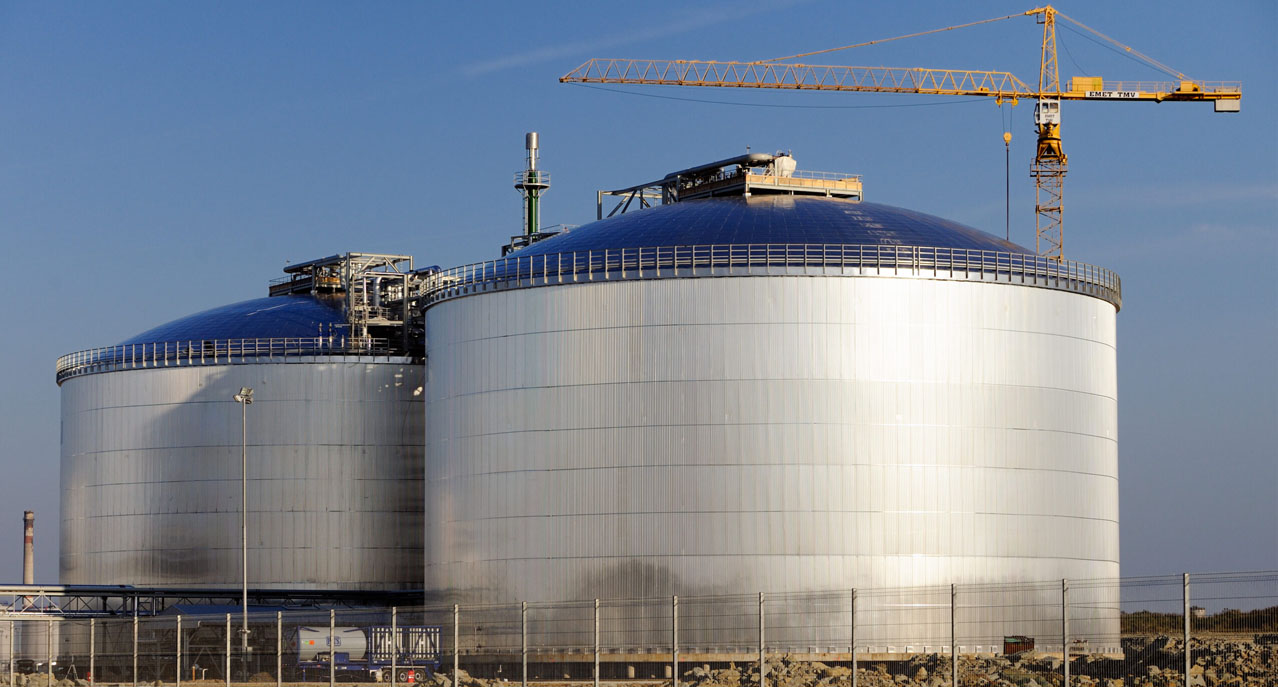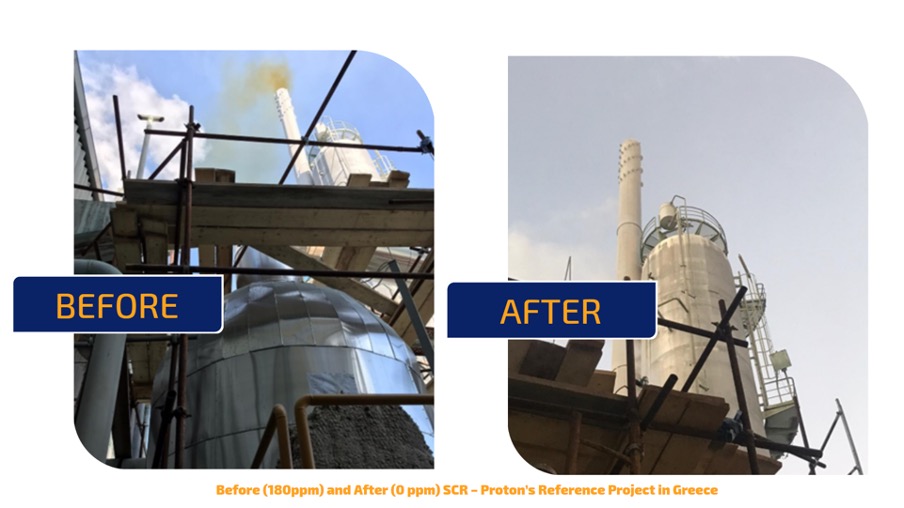Proton Ventures provides innovative solutions for the reduction of emissions from various industrial processes. Such as the removal of nitrogen oxides (NOx) and nitrous oxide (N2O), a potent greenhouse gas that can have a significant impact on the climate, even in relatively small concentrations.
Understanding NOx Emissions and N2O
NOx compounds, which consist of nitric oxide (NO) and nitrogen dioxide (NO2), are big pollutants produced by combustion processes, such as those in power plants, industrial boilers, and other manufacturing activities. These emissions contribute to smog formation, acid rain, and can cause bad health. In addition to NOx, nitrous oxide (N2O), also known as laughing gas, is a potent greenhouse gas that contributes to climate change, even in small concentrations. In fact, 1 molecule of N2O is equals to 298 CO2-equivalents!
The DeNOx Solution
To reduce the negative effects of NOx emissions and N2O on the climate, the DeNOx process was developed. DeNOx, short for “De-NOxification,” is a broad term that encloses various techniques and technologies used to reduce NOx emissions and N2O emissions. These methods can be categorized into two primary approaches: selective catalytic reduction (SCR) and selective non-catalytic reduction (SNCR).
Selective Non-Catalytic Reduction (SNCR) and N2O Emissions
While SNCR is a catalyst-free DeNOx method, it is less effective at lowering N2O emissions compared to SCR. This method relies solely on the injection of a reducing agent, typically ammonia or urea, into the flue gas at a specific temperature range. The reducing agent reacts with NOx at this temperature, breaking down the pollutants into less harmful compounds.
Selective Catalytic Reduction (SCR) and N2O Emissions
While SNCR is a catalyst-free DeNOx method, it is less effective at lowering N2O emissions compared to SCR. This method relies solely on the injection of a reducing agent, typically ammonia or urea, into the flue gas at a specific temperature range. The reducing agent reacts with NOx at this temperature, breaking down the pollutants into less harmful compounds.
For SCR, the reduction of NOx and N2O is achieved through the following reaction schemes
N2O decomposition without NH3
2 N2O → 2N2 + O2
NH3 assisted N2O decomposition
3 N2O + 2 NH3 → 4 N2 + 3 H2O
Fast SCR reaction until all NOx has been consumed
NO + NO2 + 2 NH3 → 2 N2 + 3 H2O
Slow SCR for the remaining NO2
6 NO2 + 8 NH3 → 7 N2 + 12 H2O
Proton Ventures’ Role in SCR NOx and N2O Removal
Proton Ventures is active in the DeNOx sector, offering advanced solutions that not only reduce NOx emissions but also tackle N2O emissions, a critical contributor to climate change. Our unique approach together with Topsoe’s TertiNOx catalyst combines cutting-edge technology with sustainability, delivering exceptional results while minimizing environmental impact.
Proton Ventures conducts Basic & Detailed Engineering and provides with the reactor vessel, the Ammonia Injection Grid (AIG) and offers a turn-key job, incl. start-up and training of operators.
